YOUTH RISING 2023
From wherewithal to wear-with-all – how young people are pushing for slow fashion
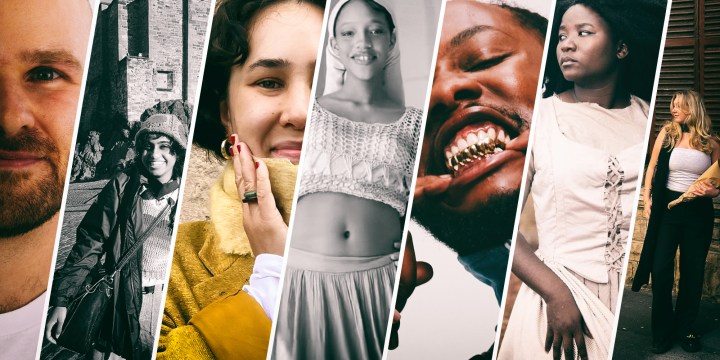
Every second the equivalent of a truckload of clothes ends up in landfill sites. Instead of seasonal trends, brands release new styles weekly and we are buying 60% more clothing than we did two decades ago. But amid the rise of fast fashion, a movement to slow down our consumption has risen among young people.
You won’t be hard pressed to find a millennial or Gen Z’s social media feed that perpetuates fast fashion – existing in an echo chamber of influencers and online shopping giants promoting garments that are produced and sold at high rates and low prices.
But on the other side of that is a movement to slow down our consumption, with many young people pushing for “slow fashion” – which Izak du Plessis, a 30-year-old sustainable marketplace entrepreneur, describes as “a conscious approach to clothing that focuses on quality, durability and local production – a hard shift away from super-convenient, fast-paced clothing outlets”.
In the run-up to Youth Day this year, Daily Maverick spoke to several young Africans about how they incorporate slow fashion practices into their wardrobe.
“I will say that [fast fashion] is actually very hard to resist,” said Stella Hertantyo, a 24-year-old slow fashion enthusiast and writer. “The system is built around convincing us that we are always scarce of clothing and that our clothes can be replaced quickly, easily and cheaply.”
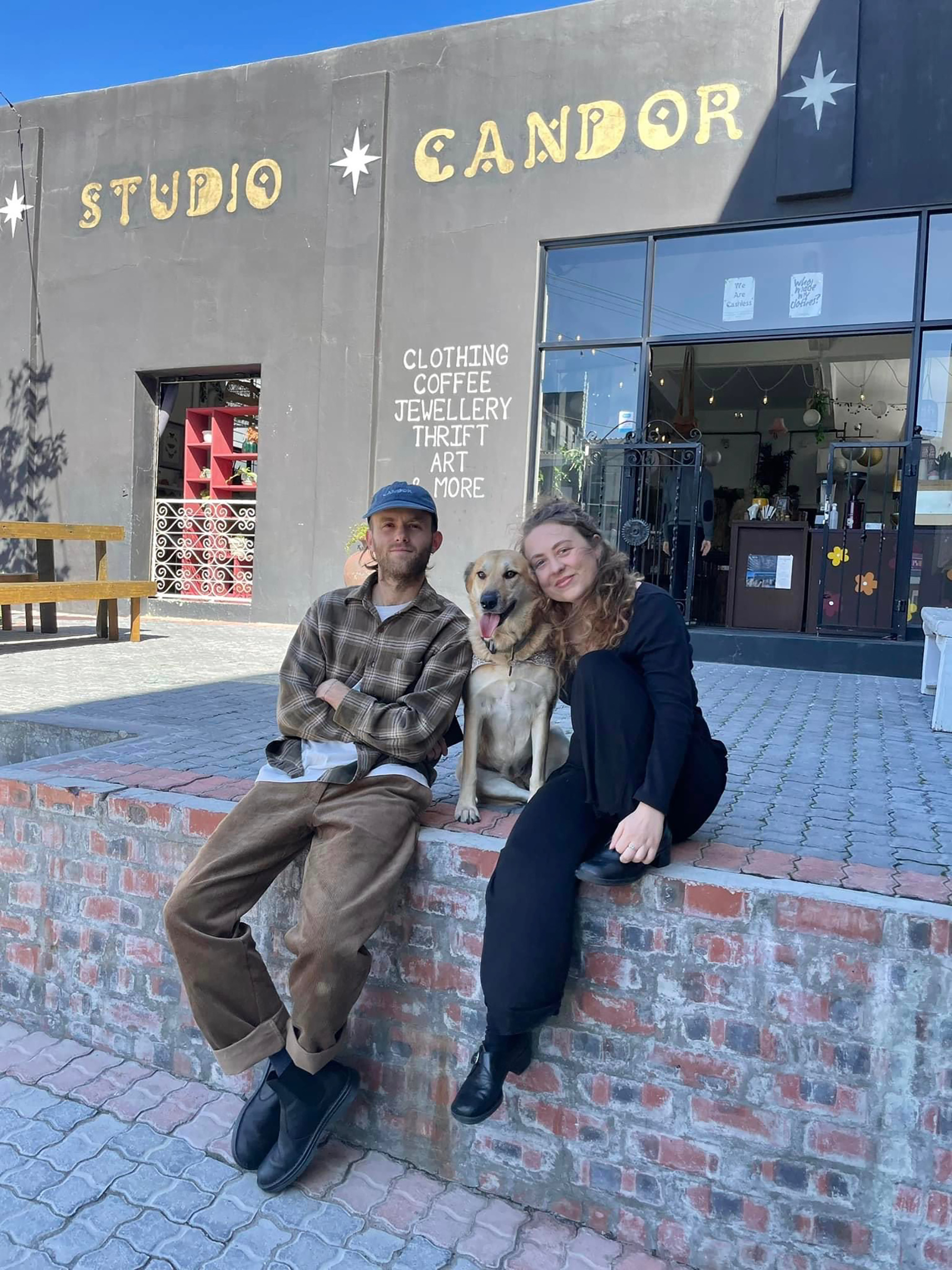
Ashby and Noah Kaplan, co-founders of sustainable fashion brand Studio Candor. (Photo: Ashby)
The problem with the fast fashion industry is that its production contributes a whopping 1.2 billion tonnes of greenhouse gas emissions annually, according to figures from the United Nations Environment Programme and the Ellen MacArthur Foundation. That’s more than the aviation and shipping industries combined.
What’s more, it takes about 7,500 litres of water to make a single pair of jeans, which is what the average person drinks in seven years, according to the United Nations Conference on Trade and Development.
And that’s just the production – out of the 100 billion garments produced each year, 92 million tonnes end up in landfills and about half a million tonnes of plastic microfibre end up in the ocean.
“The fashion industry produces a staggering amount of waste, from the excessive use of natural resources to the pollution caused by textile production and the disposal of unwanted garments,” said Ashby, a 27-year-old slow fashion designer and founder of sustainable clothing brand Studio Candor.
“Fast fashion brands like Shien, Cotton On, H&M, Zara and Fashion Nova, with their constant churn of new styles, contribute to this problem,” said Ashby.
Hertantyo pointed out that countries in the Global South have become dumping grounds for used clothes, saying that “people living in those countries have to deal with the burden of waste, and it’s not waste that they created”.
Desiree Namachotsa, a 24-year-old sustainable fashion designer and educator from Malawi, said she first got into slow fashion after witnessing the damage dumping of clothes did to water bodies in her country.
Creating a safe space
While fast fashion produces myriad social and environmental issues, these advocates for slow fashion don’t condemn anyone who consumes fast fashion.
“I don’t want to create a movement based on judgement and guilt, where it feels intimidating to be a part of and like you have to conform to a specific way of engaging with slow fashion,” said Hertantyo.
Read more in Daily Maverick: Delicious, darling! Edible raincoats, algae dyes, hemp tees – the future of fashion grows in a pond
“I think fast fashion, for those who can only afford that price point, can be shopped from in a sustainable way, and we shouldn’t demonise people shopping in moderation at fast fashion stores out of necessity,” said Tegan Gibaud, a 22-year-old climate change science honours student and slow fashion advocate.

Intersectional activist Raeesah Noor-Mahomed wearing clothes she crocheted, her mom’s clothes when she was younger and pieces bought from a flea market. (Photo: Supplied by Raeesah Noor-Mahomed)
Who made this, why is it so cheap?
That said, Hertantyo said a big part of slow fashion is being mindful of where our clothes come from and reflecting on our role as consumers.
“It’s wild that you can buy something to wear that costs the same as something to eat,” said Hertantyo. “As soon as you start thinking what it takes to make a piece of clothing, it immediately becomes absurd.”
From growing the fibres needed to make fabrics, to sewing garments, to quality checks and dying processing, retail and marketing – it takes a lot to create one garment.
While buying a dress from Shein can cost R144, “we have to question why we feel we are entitled to this level of cheap clothing”, said Hertantyo.
“Shein is very affordable and that’s what’s appealing to people,” said 19-year-old Precious Joy Huntley, who incorporates sustainable fashion practices into her wardrobe.
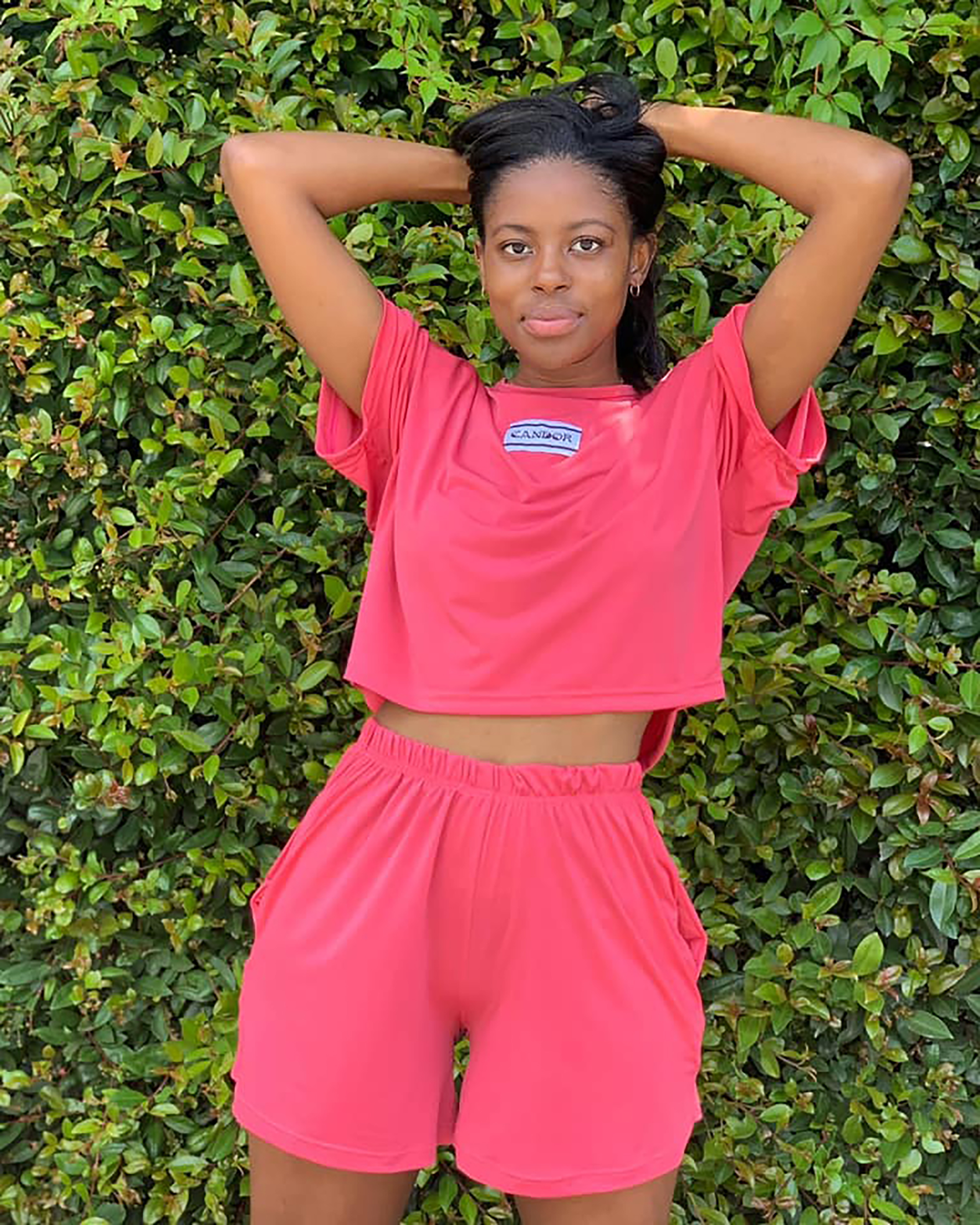
Model Ruth Mathaba wearing Studio Candor set. (Photo: Studio Candor)
“But that ‘cheapness’ is based on cheap labour, terrible working conditions, child labour and the theft of hardworking designers. That’s why we should always ask ourselves if the clothing we are wearing is worth the expense of the lives of those who made it.”
How can we make our wardrobe more sustainable?
A big concern for people looking to get into slow fashion is that sustainable brands are expensive, which is also why many people prefer to find good deals online.
“One thing I had to learn very early is that slow fashion is not about centring consumption,” said Hertantyo, who got into the space when she was a student with a tight budget. “I felt like being a part of the slow fashion movement meant I needed to buy from specific brands that were a bit out of my price range, and that I would be excluded.”
But these advocates explained that slow fashion isn’t about buying more – it’s about fully using and taking care of what you already have.
“There is nothing more sustainable than to make use of what already exists!” said Ashby, explaining that she takes good care of her clothes, repairing and upcycling them when needed, and selling or donating items that no longer serve her so that they don’t end up in a landfill.

Stella Hertantyo said slow fashion to her is ‘about defining ourselves as something more than just consumers’. (Photo: Stella Hertantyo)
Upcycling is creating new garments through parts of older clothes – which is exactly what Desiree Namachotsa from Malawi and South African designer Skyler Williams do.
Namachotsa explains she makes clothes from other clothes, curtains and bedsheets. “I believe all fabric should be used and I practise a zero waste kind of designing whereby every cloth that is second-hand and cannot be worn is redesigned into something wearable.”
Williams makes garments out of pieces of old or very destroyed denim.
“By taking good pieces and adding them together, it really shows it’s possible to make something beautiful out of scraps,” he said.
Fall in love with the clothes you already own
Hertantyo said finding ways to fall in love with the clothing she already has and finding ways to restyle them was a huge part of her slow fashion journey – “and that includes old fast fashion pieces. We all have them in our wardrobes. It’s not a secret.”
“Go and stand in front of your closet and consider the work, resources and effort that went into bringing all your garments into existence,” said Du Plessis. “Consider rehoming/swapping items that don’t spark joy and take better care of your clothes!”
Read more in Daily Maverick: Style-conscious people are buying secondhand
Williams said: “It sounds dumb, but don’t wash your clothes as much. Some people, unconsciously, will just throw their denim jacket in the laundry and that really damages clothes a lot more than people realise.” Hydrosol spray protects denim, he added.
Hertanto said she tries to “not be ashamed about rewearing outfits, even if I posted it on Instagram before, learning about the stories behind my clothing and sharing that with others”.
Investing in quality over quantity
“Affordable alternatives exist beyond fast fashion giants. Just because it’s super-convenient doesn’t mean that other options don’t exist,” said Du Plessis.
“While sustainable clothing may seem expensive, it’s crucial to consider the long-term value, quality and positive impact on the environment and workers.”
“When there comes a time when I need to buy something at a fast fashion store due to maybe financial or urgency limitations, I try to buy things that are good quality, sturdy, or will last in the long term,” said Gibaud.
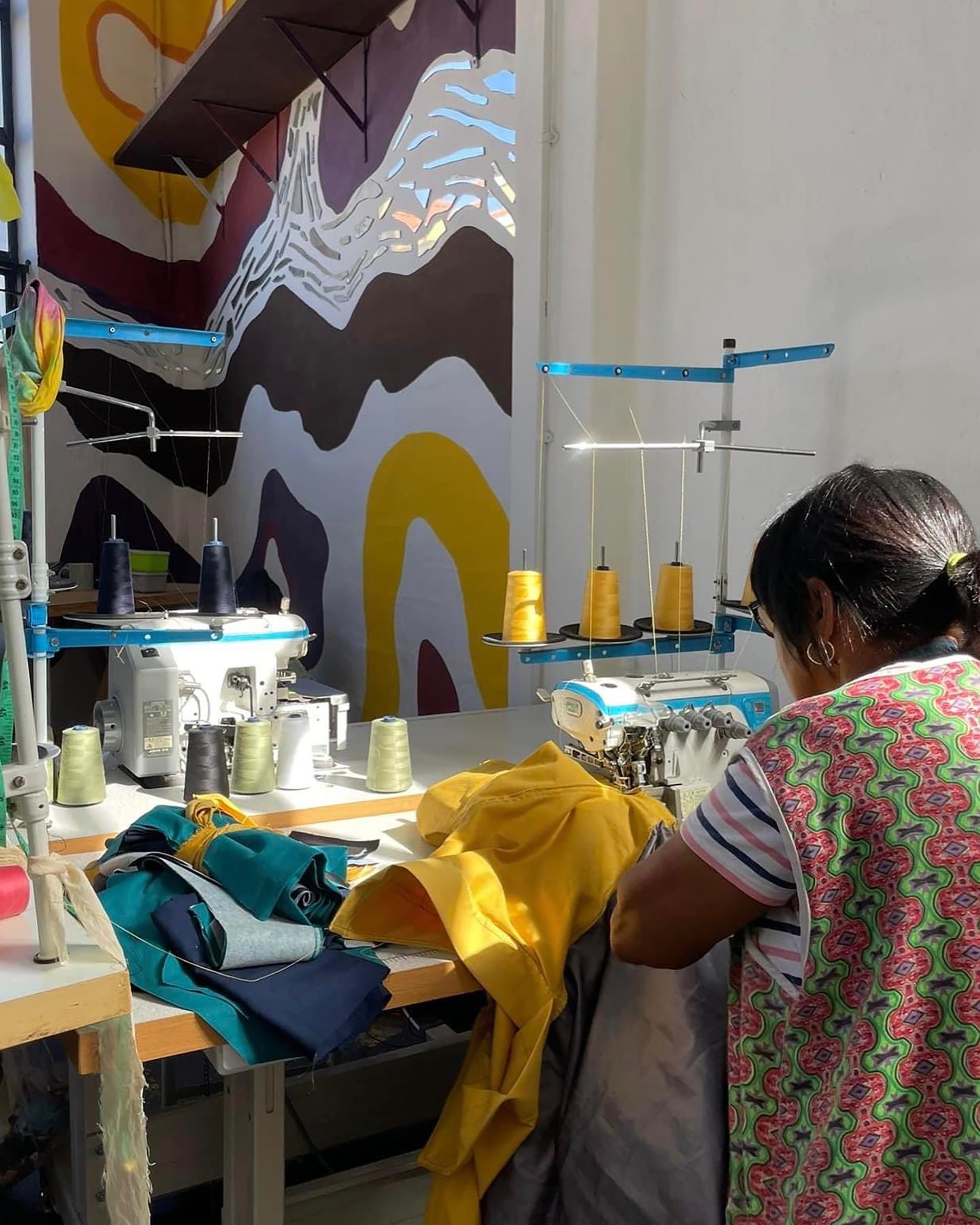
Machinist works on production for the A/W 2023 range for the sustainable fashion brand Studio Candor. (Photo: Ashby)
Ashby suggests that, when buying garments, opt for high-quality ones made from natural fibres that are known for their durability.
“While these items may have a slightly higher price tag upfront, their longevity and ability to outlast trends make them cost-effective in the long run,” said the designer.
Intersectional activist Raeesah Noor-Mohamed (21) suggests having good-quality staple items (such as pants, shirts and jackets), and a few statement pieces.
“You can have the same base for all your outfits, and generally you only need one statement piece, and then your whole outfit will be different,” said Noor-Mohamed.
Buy or swap pre-loved garments
All the interviewees suggested swapping clothes with friends and family, going to mend and swap events and buying from second-hand shops.
“Not only will you discover one-of-a-kind pieces, but you’ll also give these vintage items a new lease of life, reducing the demand for new production,” said Ashby.
Twyg hosts monthly swap and mend pop-ups, where you can bring unbroken and clean garments and swap them for the same number of clothes.
Thrifting has been around for decades, and has become somewhat gentrified and expensive in some areas, but Noor-Mohomed suggests checking out V.Declutter if you’re in Cape Town, a second-hand shop that prioritises accessibility and affordability.
Support local sustainable businesses
“I see clothing as an investment… in businesses and people that I really believe in,” said Hertantyo.
For example, Du Plessis has a company called Shiftr, a third-party marketplace for eco-conscious brands that specialise in quality pre-owned garments and the best in sustainably made designs.
“By choosing locally made garments, you not only contribute to the local circular economy but also reduce the carbon footprint associated with long-distance shipping,” said Ashby, whose slow fashion brand Studio Candor carefully selects materials, collaborates with artisans and fair-trade cooperatives, and designs garments that are meant to last. DM

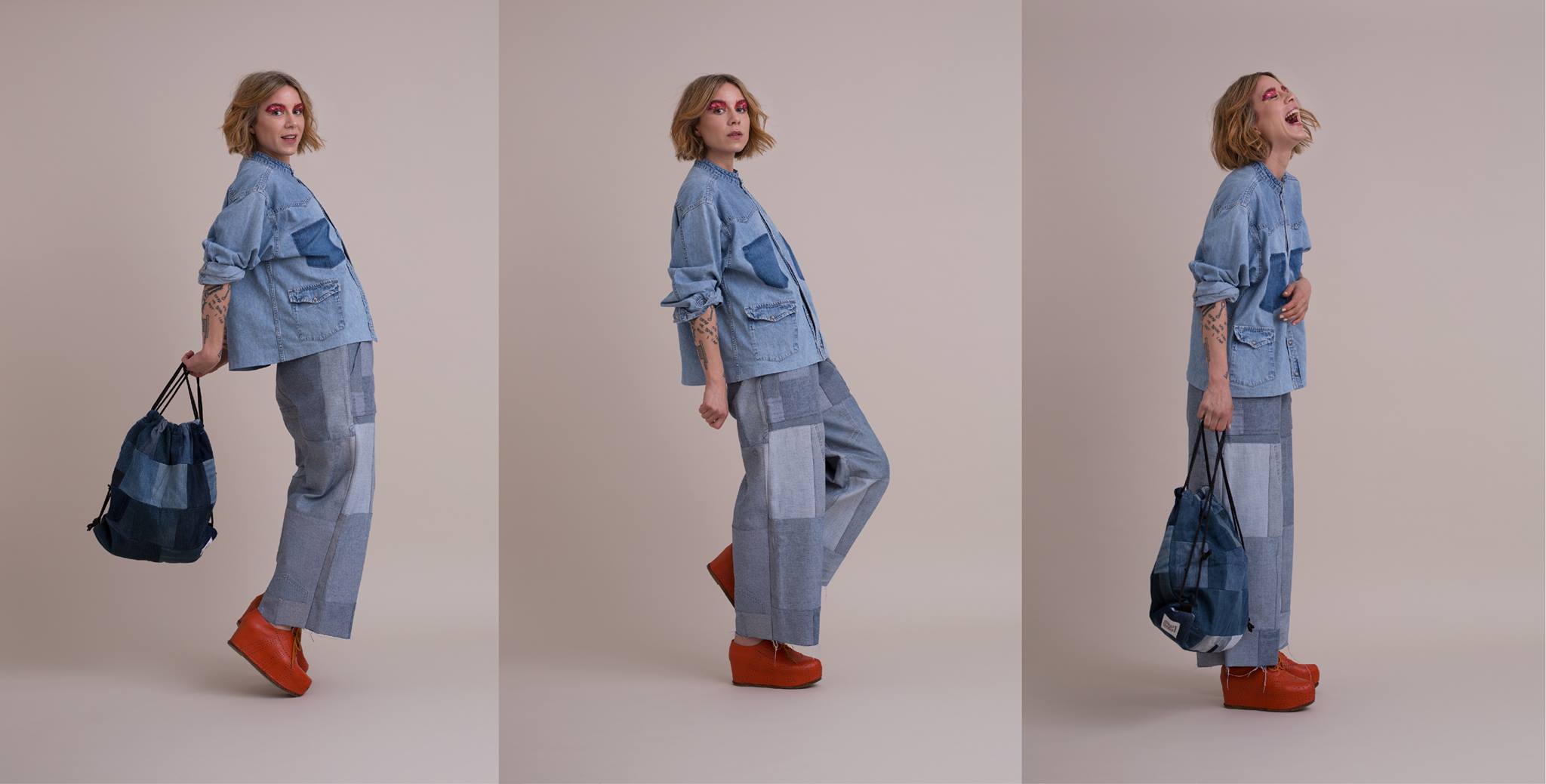


















 Become an Insider
Become an Insider
Comments - Please login in order to comment.